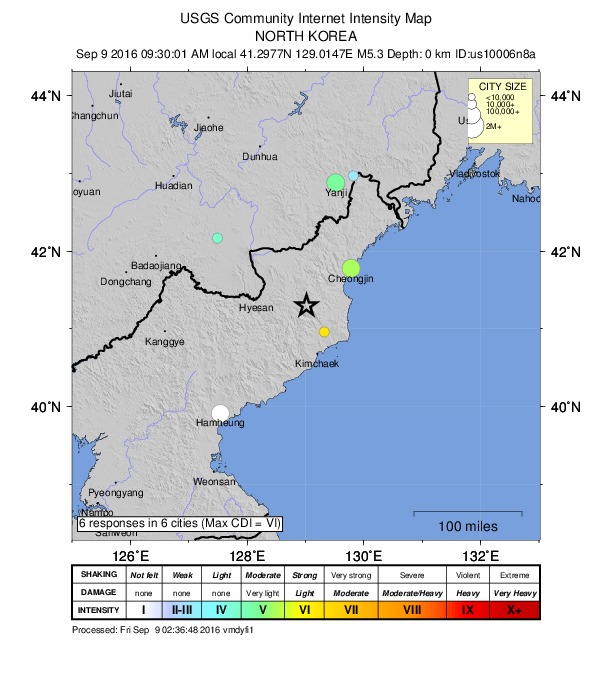Fifth Nuclear Test conducted by North Korea
North Korea is again in news for conducting its fifth nuclear test on 9th September 2016. The test was conducted at the Punggye-ri Nuclear Test Site, which is located 50 km northwest of Kilju City in Kilju County.
Image Source: https://commons.wikimedia.org/wiki/File%3AUs10006n8a_ciim.jpg
According to lonelyplanet.com,
Kim Jong-un is the supreme leader of North Korea since 2011. He is the son of previous supreme leader Kim Jong-il, who was supreme leader of North Korea from 1994 to 2011. Kim Jong-il was the son of founder of North Korea, Kim II-sung, who was supreme leader of the nation since its establishment in 1948 till 1994.
April 2012 trip to DPRK, North Korea for the 100th year birthday celebrations for Kim Il Sung - check out North Korea blog at americaninnorthkorea.com/
Image Source: https://commons.wikimedia.org/wiki/File%3AUs10006n8a_ciim.jpg
North Korea
Officially known as the Democratic People's Republic of Korea (DPRK).According to lonelyplanet.com,
"North Korea is the world's most secretive country"According to official webpage of the DPR of Korea,
"The DPRK is the Juche-oriented socialist state which embodies the idea and leadership of Comrade Kim II Sung, the founder of the Republic and the father of socialist Korea."In other words, North Korea is basically a communist state. The term 'Juche' is translated as 'self-reliance', is the official ideology of North Korea. Kim II-sung (1912-1994) developed the ideology placing emphasis on the individual, the nation state and its sovereignty.
Kim Jong-un is the supreme leader of North Korea since 2011. He is the son of previous supreme leader Kim Jong-il, who was supreme leader of North Korea from 1994 to 2011. Kim Jong-il was the son of founder of North Korea, Kim II-sung, who was supreme leader of the nation since its establishment in 1948 till 1994.
April 2012 trip to DPRK, North Korea for the 100th year birthday celebrations for Kim Il Sung - check out North Korea blog at americaninnorthkorea.com/
- The capital of North Korea is Pyongyang with a population of 2.5 million.
- The population of North Korea is 25 million.
- The GDP(PPP) of North Korea is $40 billion.
- The official currency is North Korean won (₩).
- It is bordered by China, Russia and South Korea.
- The origin of the Korean state began with Korean Pottery dating back to 8000BC.



Comments
Post a Comment
We welcome constructive comments for the articles on the website. Readers can add their own views, they can ask any clarification and suggestions are always welcome.